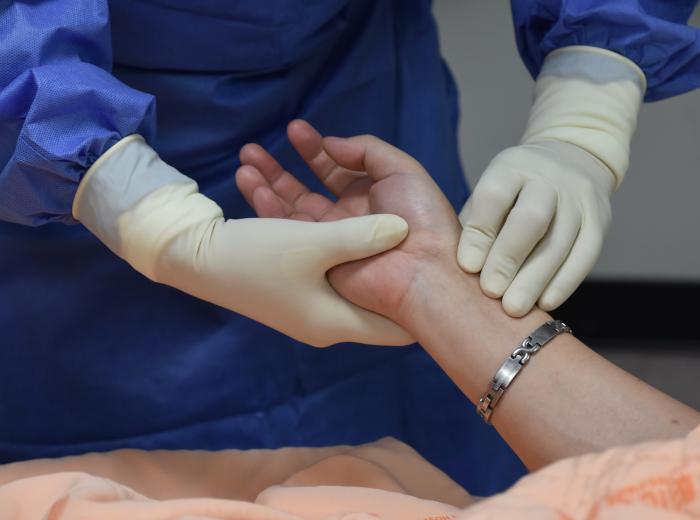What are Safety Behaviors?
Safety-seeking behaviors, this is an actual thing. In the context of health anxiety, safety behaviors are what we do to try and prevent or reduce the anxiety we are experiencing from a given symptom, bodily sensation or bodily function. The three main types of safety behaviors related to health anxiety are reassurance-seeking, checking and preventive.
Why Don't They Work?
All of these behaviors might reduce anxiety in the short-term but they most definitely increase it over the long-term. Why? Because we learn to rely on them to achieve a sense of safety and rob ourselves of the opportunity to see that we never needed them to begin with because we weren’t actually in danger. We might think, ‘Thank God I checked my pulse and stopped working out to slow down my heart rate. I would have had a heart attack.’ But we never learn that we would not have had a heart attack, whether we checked our pulse a dozen times or none at all. Also, the more we use safety behaviors the more meaning and significance we give to them and, thus, the more dependent we become on them.
Reassurance-Seeking Safety Behaviors
First, let’s talk about reassurance-seeking behaviors. To deal with the stressof a new symptom or sensation, you collect information to assess what kind of danger you might be in. You might ask a friend or a family member what they think. Do you think this twitch is something neurological? Do I look flushed to you? Or you might spend a pretty penny going to primary care offices, urgent cares, hospitals or other medical facilities to consult with doctors and other medical professionals.
Excessive Checking Safety Behaviors
Next up is the safety behavior of excessive checking. You often monitor for symptoms, physical sensations or any kind of bodily function that might be “concerning.” You are like a little detective, always working hard to solve each case or new symptom. You might repeatedly push, pull, poke or pinch a part of your body or a new symptom. You might compare two sides of your body to identify any differences. You may inspect your feces or urine, check your heart rate, blood pressure, weight or lung capacity. Or perhaps you give yourself examinations of some kind, such as visual tests, neurological or cognitive tests or physical exertion tests. Sometimes you are so on top of it that you even make sure you are aware of all the potential future symptoms that may emerge. Some checking behaviors are subtle and sometimes not even easy to identify (e.g. paying attention to breathing patterns) and others are so overt and time-consuming that they can seriously disrupt your daily life.
Preventive Safety Behaviors
And last but not least is preventive safety behaviors. You seek to prevent the possibility of future health problems. You might read incessantly about health recommendations or attend health classes or seminars. Or maybe you take a variety of supplements, workout religiously and/or go to great lengths to avoid a wide range of foods or drinks, such as eating strictly non-GMO, organic, non-processed foods. To prevent consequences from any future health emergencies, you might ensure you have personal medical information, your phone, medical equipment or medication readily accessible at all times. Or you might prefer to have a safe person with you whenever possible or consistently keep loved ones updated on your whereabouts just in case you have a medical emergency. When planning a long drive or trip to somewhere new, you might do research to ensure that the destination is located nearby an urgent care or hospital.
How is This All Working Out for You?
All of the time, energy and resources given to these activities stem from one overarching goal: to feel safer. At times, you might want to identify whatever health issue you believe you have at the time. You figure if you gather all the facts, you can bring the summary of information to the doctors and have them address your health issue early on, before it is “too late.” In other cases, you might seek reassurance that you don’t have the feared disease, perhaps because you’ll find you don’t have a majority of the symptoms.
But ironically, although you are aiming to feel safe in one way or another, you likely find that one of two things happen: (1) you feel worse afterward because you come across new information that makes you worry even more; or (2) you feel better but find that it is short-lived. Before long, you begin to worry again because that symptom or bodily sensation either never went away or a new one popped up. It is a never ending cycle that can only be interrupted by learning to refrain from using safety behaviors.
Of course, health consciousness is not a bad thing. It is prudent and necessary to see a doctor if you have a new lump or a changing mole. It is important for women to give themselves breast exams once a month. And it is good to exercise and make informed, healthy decisions about the things you eat and drink. These are all necessary ways of taking care of yourself. However, when the things you do to manage your health become excessive and of dire significance, you have slipped into the realm of safety behaviors. It is one thing to take reasonable steps to optimize your health and live a balanced lifestyle. It is entirely another if you believe one or more of these behaviors are what stands between life and death.


